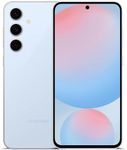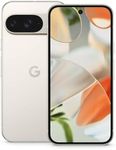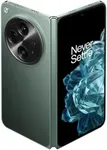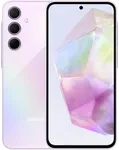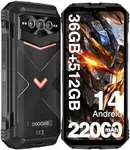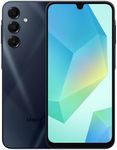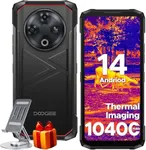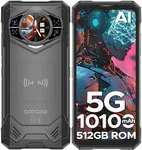Buying Guide for the Best Smartphone With Camera
Choosing the right smartphone with a camera can be a daunting task given the multitude of options available. The key is to understand your needs and how different specifications can meet those needs. By focusing on the most important aspects of a smartphone camera, you can make an informed decision that ensures you get the best value and performance for your requirements.Megapixels (MP)Megapixels refer to the resolution of the camera, indicating how many millions of pixels the camera sensor can capture. Higher megapixels can result in more detailed images, which is important if you plan to print large photos or crop images without losing quality. For general use, a camera with 12-16 MP is usually sufficient. If you are a photography enthusiast or professional, you might prefer a camera with 20 MP or more.
ApertureAperture is the opening in the camera lens that allows light to enter. It is measured in f-stops (e.g., f/1.8, f/2.2). A lower f-stop number means a larger aperture, which allows more light to hit the sensor, resulting in better performance in low-light conditions and a shallower depth of field for blurred backgrounds. If you often take photos in dim environments or enjoy portrait photography, look for a smartphone with a lower f-stop number (e.g., f/1.8 or lower).
Image StabilizationImage stabilization helps reduce blurriness caused by shaky hands or movement while taking photos or videos. There are two main types: Optical Image Stabilization (OIS) and Electronic Image Stabilization (EIS). OIS physically stabilizes the lens, providing better results, especially in low light. EIS uses software to reduce shake, which is more common in budget smartphones. If you frequently take photos or videos on the go, OIS is a valuable feature to look for.
Zoom CapabilitiesZoom capabilities allow you to get closer to your subject without physically moving. There are two types: optical zoom and digital zoom. Optical zoom uses the camera's hardware to magnify the image, maintaining quality, while digital zoom enlarges the image using software, often resulting in loss of detail. For better quality, look for smartphones with optical zoom, especially if you enjoy capturing distant subjects like wildlife or sports events.
Sensor SizeSensor size refers to the physical dimensions of the camera sensor. Larger sensors can capture more light, resulting in better image quality, especially in low-light conditions. They also provide a greater dynamic range and less noise. Common sensor sizes in smartphones include 1/2.55-inch, 1/1.7-inch, and 1-inch. If you prioritize image quality and often shoot in challenging lighting, opt for a smartphone with a larger sensor.
Video RecordingVideo recording capabilities are crucial if you plan to capture high-quality videos. Key aspects to consider include resolution (e.g., 1080p, 4K, 8K) and frame rate (e.g., 30fps, 60fps). Higher resolution and frame rates result in smoother and more detailed videos. For casual use, 1080p at 30fps is usually sufficient. If you are a content creator or enjoy making high-quality videos, look for smartphones that support 4K or higher resolutions and higher frame rates.
Front CameraThe front camera, or selfie camera, is important for taking self-portraits and video calls. Key specifications to consider include megapixels, aperture, and additional features like portrait mode or beauty filters. For general use, a front camera with 8-12 MP and a decent aperture (e.g., f/2.0) is usually adequate. If you frequently take selfies or use video calling apps, you might want a higher resolution and more advanced features.
Additional FeaturesAdditional features can enhance your photography experience. These may include night mode for better low-light photos, portrait mode for professional-looking portraits, AI enhancements for automatic scene detection and optimization, and Pro mode for manual control over camera settings. Consider what features are important to you based on your photography style and needs. For example, if you love night photography, a robust night mode is essential.
